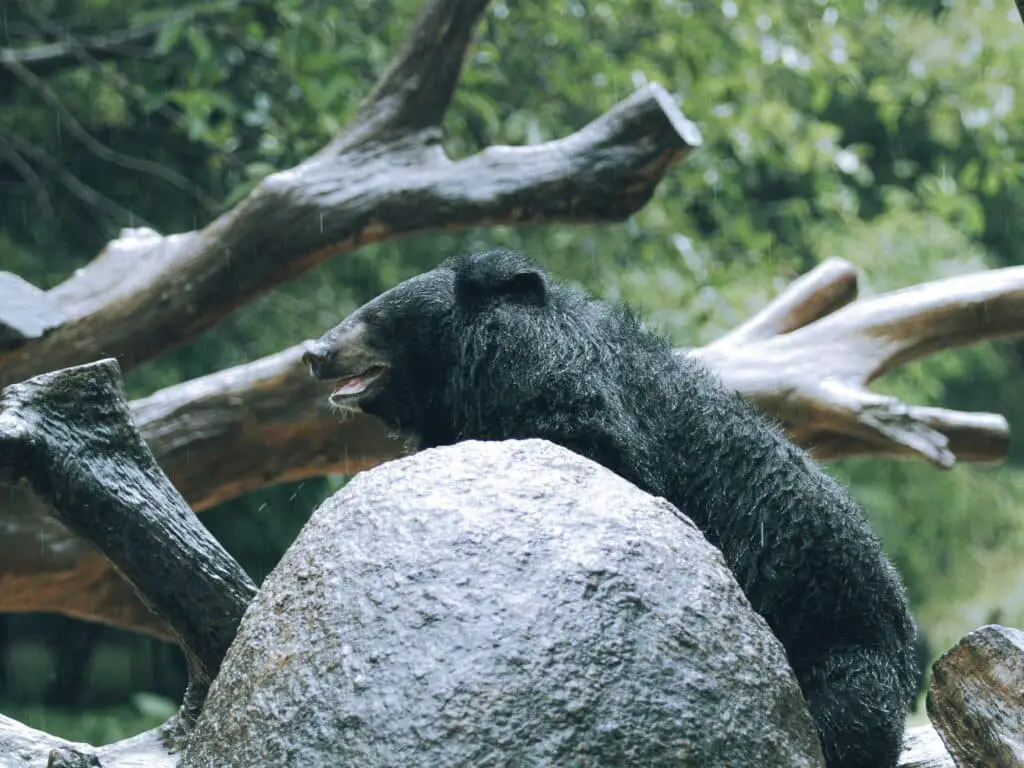An Overview of the American Black Bear
The American Black Bear, known scientifically as Ursus americanus, is a species that commands attention and respect.
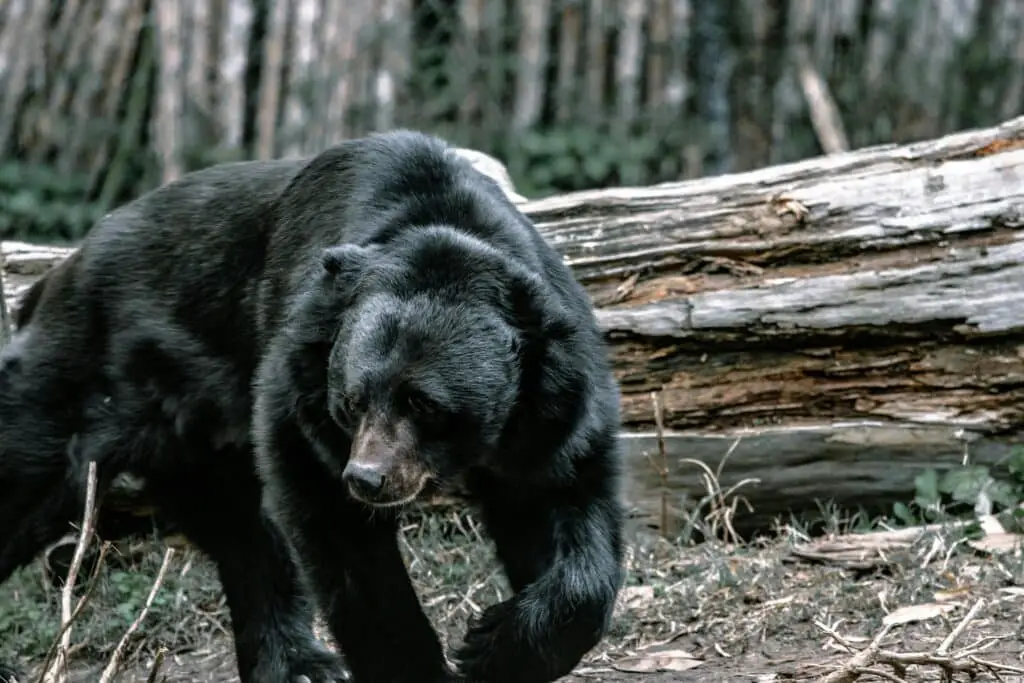
Found predominantly in North America, this bear species is widely distributed across the continent, from the northern reaches of Alaska and Canada down to Mexico.
With their distinctive appearance and curious nature, black bears have long been a subject of fascination, fear, and admiration among those who share their habitat.
Physical Characteristics and Adaptations
The American Black Bear exhibits a robust physique, with males typically larger than females.
Adult males generally weigh between 130 to 660 pounds, depending on their habitat and diet, while females tend to be about 33% smaller.
They have a dense coat of fur that can appear black, brown, cinnamon, or even white in rare cases, known as the Kermode or spirit bear.
One of their most compelling adaptions is their keen sense of smell, which surpasses even that of a bloodhound and is crucial for locating food.
Robust limbs and strong claws enable them to climb trees with ease, an ability that is especially useful for cubs avoiding predators.
Behavioral Traits of the American Black Bear
Primarily solitary animals, American Black Bears have a complex set of behaviors.
They are generally crepuscular, being most active during dawn and dusk, although their behavior can vary depending on the availability of food sources and human activity.
During winter, they undergo a state of torpor, a deep sleep that allows them to conserve energy, though it’s not a true hibernation like some other bear species.
Habitat and Distribution
Black Bears are highly adaptable and occupy a range of habitats, including forests, swamps, and mountainous areas.
They have an expansive range covering much of North America, which has allowed them to survive in regions with varying climatic conditions and terrain.
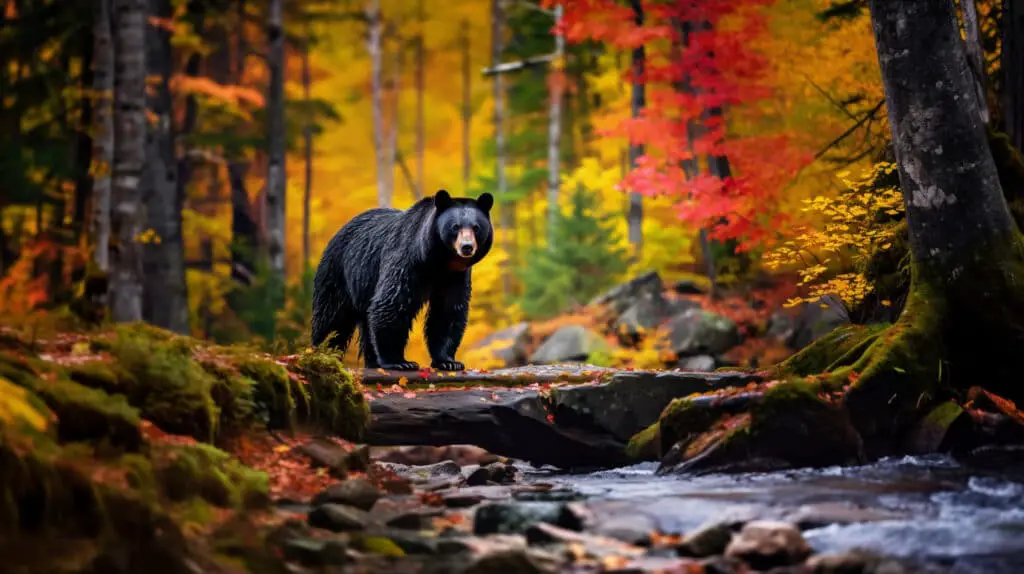
Adaptability to different food sources and human-altered landscapes helps them thrive in diverse environments.
Diet and Foraging Behavior
Omnivorous in nature, American Black Bears have a varied diet that shifts with the seasons and the resources available in their environment.
They consume a diet rich in vegetation, fruits, nuts, insects, and small mammals, and are also known to fish for salmon in streams.
Foraging is a significant part of their daily activities, and they are known to venture near human habitats in search of food, which sometimes leads to conflicts.
Reproduction and Life Cycle
Mating usually occurs in the summer months, with gestation periods lasting approximately 220 days.
Females give birth during the winter in dens and typically have two to three cubs at a time.
Cubs are dependent on their mother’s milk for the first few months before transitioning to solid food.
As they grow, juveniles learn crucial survival skills from their mother before gaining full independence.
Conservation Status and Threats
Classified as Least Concern by the International Union for Conservation of Nature (IUCN), the American Black Bear’s population is stable in many areas, although certain subpopulations face pressures from habitat loss and fragmentation.
While they are protected in many areas, poaching and vehicle collisions still pose significant threats.
Human-bear conflicts over resources, particularly in areas where their natural habitat intersects with human settlements, remain an ongoing challenge for conservationists.
Unique Characteristics and Notable Behaviors
Black Bears have several unique traits that set them apart from other North American wildlife.
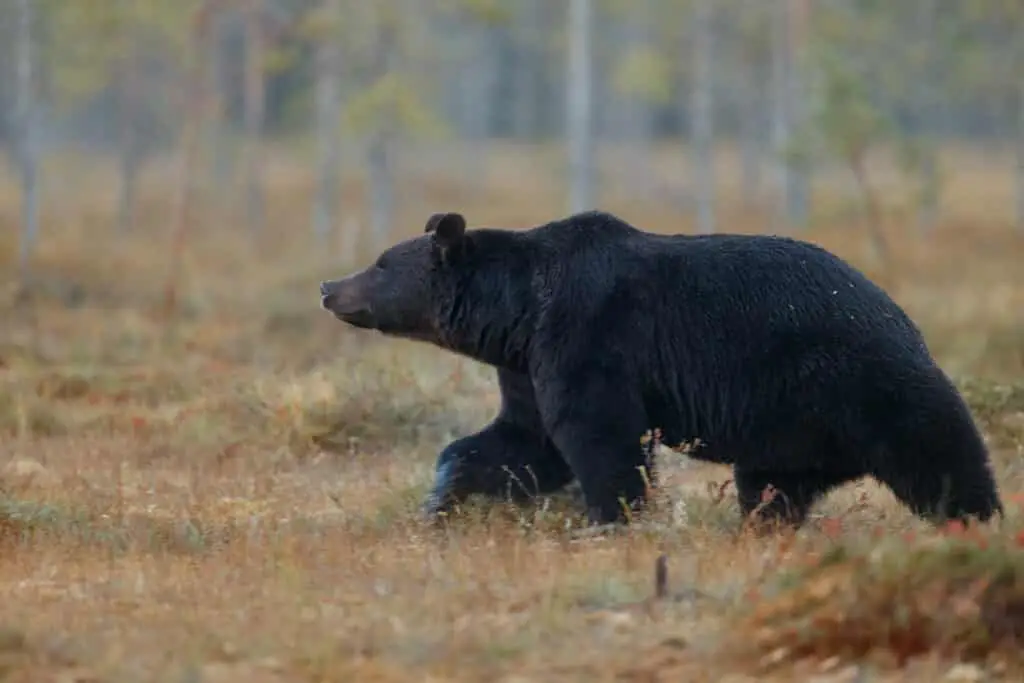
They are strong swimmers and have been observed crossing large bodies of water in search of food or new territories.
They also have an exceptional memory, particularly when it comes to recalling locations of food sources.
During times of abundance, they practice excessive foraging to build fat reserves for their winter dormancy.
Human Interactions and Safety
As human populations expand into black bear habitats, encounters become more frequent.
Ensuring safety for both humans and bears involves securing food sources, like using bear-proof trash containers, and maintaining a respectful distance.
Educating the public about bear behavior is also vital to prevent conflicts and promote coexistence.
Black Bears in Popular Culture
Long a symbol of the American wilderness, the black bear holds a place of both fear and awe in popular imagination.
Their portrayal in media ranges from ferocious predator to misunderstood gentle giant, reflecting humanity’s diverse attitudes towards these complex creatures.
FAQs about Black Bears
What should I do if I encounter an American Black Bear in the wild?
If you see a black bear, remain calm, speak in a firm voice, and slowly back away while avoiding direct eye contact, which can be perceived as a threat.
How can I prevent attracting black bears to my campsite?
Store all food items in bear-proof containers or hung out of reach, dispose of garbage appropriately, and keep your cooking area clean.
Are black bears aggressive towards humans?
Black Bears are typically more fearful of humans than aggressive, but they can become dangerous if they feel threatened, especially mothers with cubs.
How can I help to protect American Black Bear habitats?
Support conservation efforts, adhere to wildlife viewing guidelines, and advocate for smart development that considers the needs of wildlife.
Understanding the American Black Bear
In conclusion, the American Black Bear is a marvel of adaptation and survival.
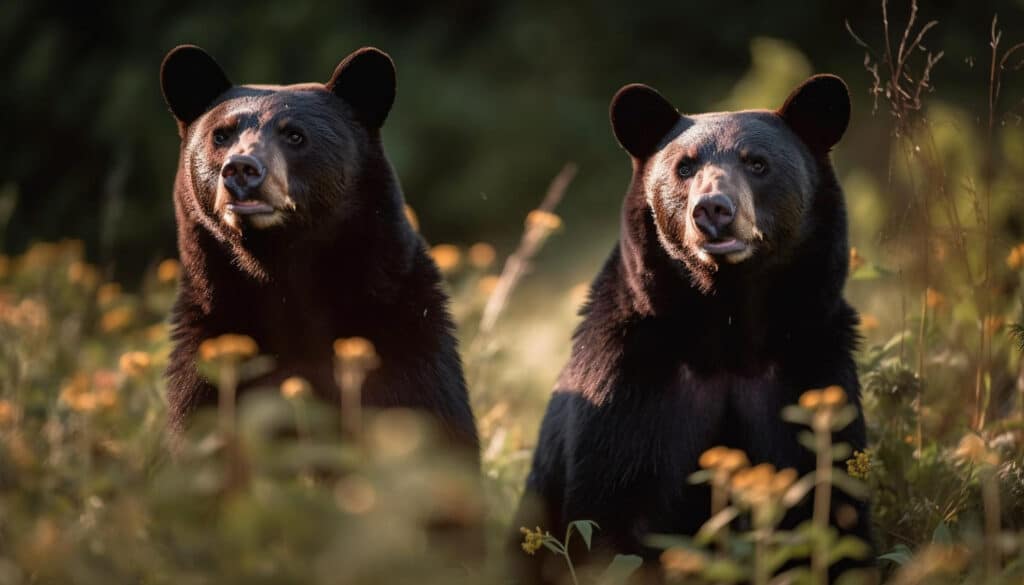
Understanding their biology, behavior, and the challenges they face allows us to appreciate their role in the ecosystem fully.
By respecting their space and supporting conservation efforts, we can ensure that black bears continue to thrive in North America’s diverse habitats.
Interactions with Other Wildlife and the Ecosystem
American Black Bears play a significant role in the ecosystems they inhabit.
They contribute to seed dispersal through their excrement, which is rich with seeds from the fruits and plants they consume.
This natural process aids in maintaining plant diversity and ensuring the health of forests and other natural landscapes.
Furthermore, their foraging habits can affect the populations of certain species of insects or small animals they prey upon, thereby influencing the structure of their habitats.
Tracking and Research on American Black Bear Populations
Wildlife researchers and biologists use modern techniques to monitor American Black Bear populations.
Methods such as radio collaring, motion-sensitive cameras, and DNA sampling from hair snares provide insights into their habits, health, movements, and numbers.
These studies not only help scientists understand bear biology but also inform management practices to ensure their longevity.
Essential Equipment for Wildlife Observers
For those interested in observing American Black Bears in the wild, proper equipment can enhance the experience.
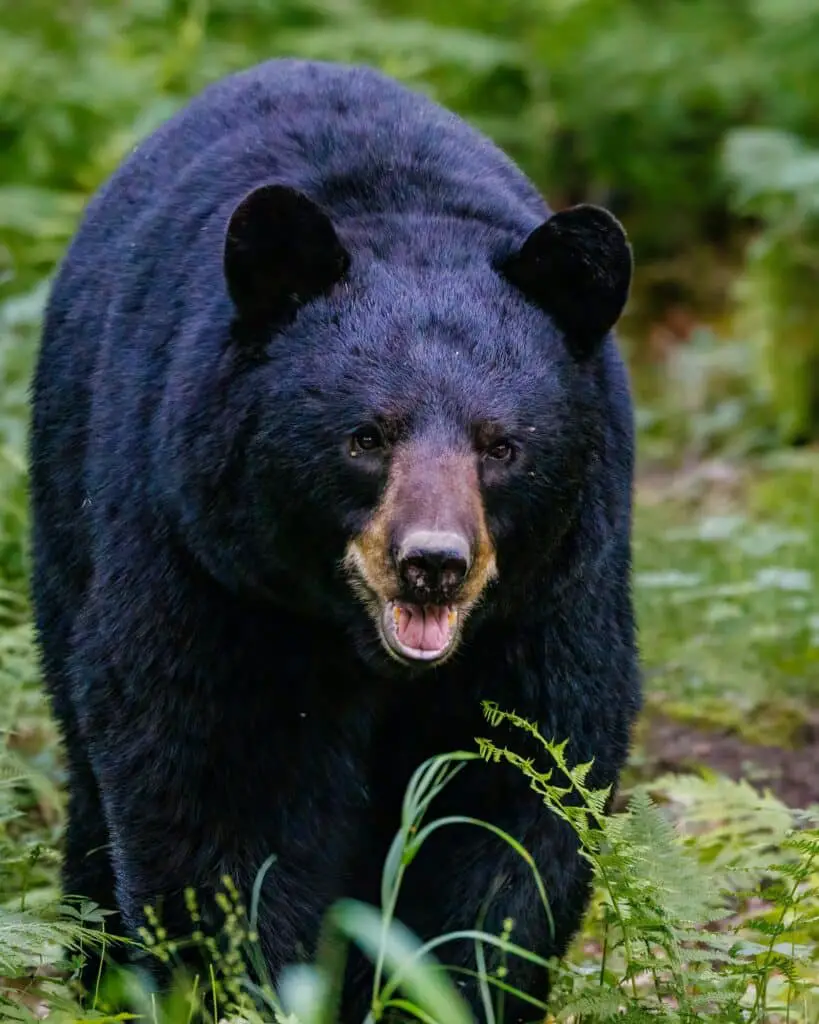
Binoculars, for instance, are indispensable for keeping a safe distance while still enjoying a close-up view.
Trail cameras can also capture incredible images without disturbing the bears, and portable GPS devices assist with navigation in remote habitats.
Products like Nikon binoculars and Bushnell trail cameras are among the popular choices for wildlife enthusiasts.
The Significance of Denning Behavior in American Black Bears
Denning behavior in American Black Bears is essential for successful overwintering during the colder months.
They select dens based on ease of excavation, protection from the elements, and proximity to spring food sources.
This behavior not only ensures their survival during periods of food scarcity but also provides a secure environment for birthing and rearing cubs.
How Climate Change Affects American Black Bears
Climate change poses new challenges for American Black Bears, particularly in the timing of their denning period.
Warmer temperatures and altered weather patterns can disrupt their natural cycles, potentially leading to increased human-bear interactions as bears may remain active longer or become active earlier in the season.
These shifts underline the importance of broad-scale environmental stewardship.
The Role of Ecotourism in American Black Bear Conservation
Ecotourism presents an opportunity to raise awareness and resources for American Black Bear conservation efforts.
By participating in guided bear watches and educational programs, tourists can learn about bear ecology and contribute financially to conservation initiatives.
It’s crucial, however, for such activities to be conducted responsibly to prevent habituation and ensure the bears’ wild nature is preserved.
Efforts to Reduce Bear-Human Conflict
Interventions designed to minimize bear-human interactions are integral to conservation.
Improvements in garbage management, community education programs, and the use of bear-proof containers have been successful in reducing conflict.
Adaptations in farming techniques, like electric fencing to protect livestock, also contribute to peaceful coexistence.
Cultural and Historical Perspectives on the American Black Bear
Throughout history, many Indigenous cultures in North America have revered American Black Bears, symbolizing strength, introspection, and spiritual authority.
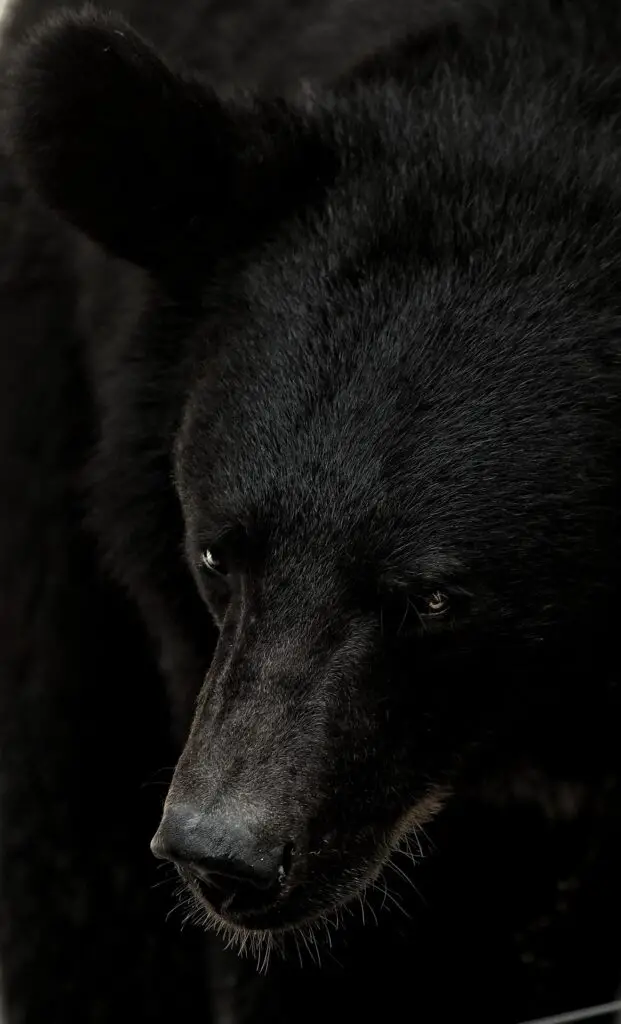
Today, black bears continue to hold a place in North American culture as emblems of wilderness and conservation narratives.
FAQs about American Black Bears
Can American Black Bears climb?
Yes, their strong limbs and claws make them excellent climbers, particularly when they are younger and lighter.
How do American Black Bears communicate?
They use a range of vocalizations, body language, and scent marking to convey messages to other bears.
What is the lifespan of American Black Bears in the wild?
On average, they live around 18 years, though some can reach ages of over 30 years in the wild.
How can we safely view American Black Bears?
Observing from a distance, using binoculars, and never feeding them are key to safe and respectful wildlife viewing.
Collaborative Efforts in American Black Bear Management
Government agencies, conservation organizations, and local communities often work together in designing and implementing management plans for black bear populations.
These collaborative efforts help synchronize objectives and ensure that both bear and human interests are addressed for the benefit of all.
Recent Research Breakthroughs and Findings
Advancements in genetics and telemetry have led to breakthroughs in understanding American Black Bear behavior, health indicators, and population dynamics.
Studies on bear genetics reveal information about their ancestry, while telemetry tracks their migration and habitat use patterns, contributing to a comprehensive understanding of their needs.
Navigating the Challenges of Wildland-Urban Interfaces
As urban development encroaches into black bear habitats, creating wildland-urban interfaces can become hotspots for bear-human conflicts.
Strategies are in place to manage these areas sensitively, balancing development with the preservation of bear corridors and natural habitats.
Children’s Education and the Role of American Black Bears
Teaching children about American Black Bears is valuable in cultivating early interests in wildlife conservation.
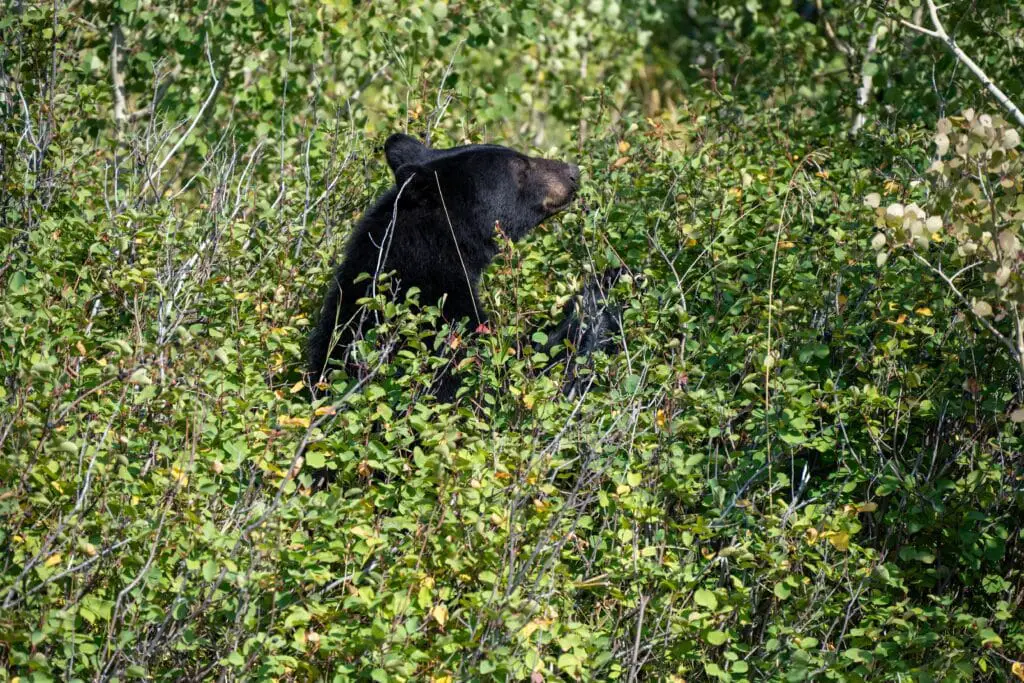
Through educational programs, books, and interactive activities, children can learn about the bears’ significance in ecosystems and the importance of coexistence.
Exploring Bear Myths and Misconceptions
Many myths about American Black Bears exist, often causing undue fear or misunderstanding.
Confronting these misconceptions with facts allows for a better-informed public and a more nuanced appreciation of these creatures.
Key Takeaways for Conservation and Appreciation
Efforts to conserve American Black Bear populations are multifaceted, including ongoing research, public education, habitat protection, and responsible ecotourism.
A deepened understanding and appreciation for these magnificent animals can lead to more proactive steps in ensuring their continued presence in North America.

